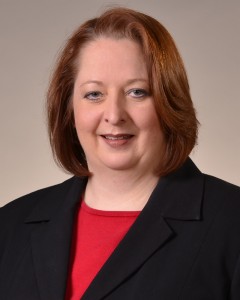
Michelle Howell Smith once found the notion of writing a dissertation daunting enough to deter her from pursuing a doctoral degree.
Now, having successfully faced that challenge, she’s receiving recognition for discovering why many undergraduate engineering students choose not to pursue a Ph.D. of their own.
Howell Smith, a CYFS project manager, will accept the Outstanding Mixed Methods Dissertation Award from the American Educational Research Association during an April 29 presentation at the AERA’s 2013 Annual Meeting in San Francisco.
A five-member AERA panel selected Howell Smith’s dissertation after reviewing submissions on criteria ranging from their integration of quantitative and qualitative methods to the significance of their contributions to mixed-methods inquiry and the field of education.
Howell Smith’s dissertation, titled “Factors that Facilitate or Inhibit Interest of Domestic Students in the Engineering PhD: A Mixed Methods Study,” originated from a grant proposal that received $150,000 in funding from the National Science Foundation.
Reverse-Engineering Misconceptions
Howell Smith said her dissertation has helped refute the prevailing notion that engineering undergraduates often decline the chance to pursue a doctorate because they don’t perceive any financial benefit to earning the degree.
Though the study did confirm that an engineering doctorate confers little financial advantage, Howell Smith learned that most undergraduates actually believe doctorates lead to higher incomes. The real culprit? According to Howell Smith, many undergraduates think that a Ph.D. inevitably leads to writing syllabi, chasing tenure and wearing tweed.
“What I really found was that undergraduate students don’t understand the nature of Ph.D.-level work,” said Howell Smith, who decided to pursue a doctorate herself only after Ellen Weissinger, her then-boss and current senior vice chancellor of academic affairs at UNL, promised to serve as her advisor.
“Only about 20 percent of engineering Ph.D.s go into academia, so that means 80 percent of them are out there working in the ‘real world,'” Howell Smith said. “But they’re usually working in positions that are not necessarily visible to an undergraduate who is going on internship at an engineering firm, so [students] don’t see that. Ph.D.s are largely invisible to them, other than faculty at the front of the classroom. And many undergraduate students may say, ‘I don’t want to be a professor, so I don’t need a Ph.D.'”
While Howell Smith said dismissing a doctorate is currently the “default pathway” for engineering students, she also noted that knowing someone who has earned the degree often encourages those students to more seriously consider the possibility.
“If they don’t know someone with a Ph.D. or never had a mentor say, ‘Hey, you might want to think about getting one,’ they may continue on and, in some cases, simply not be happy with their career – making lots of money, but not really fulfilled,” said Howell Smith. “But when someone in their lives says, ‘You know, you really ought to get your Ph.D. – you might really enjoy this kind of work,’ that’s kind of what changes their trajectory.
“That’s where we need to work on filling some gaps to get the right people into Ph.D. programs. It’s not really at all about the money; it’s about quality of life and fulfillment with the work they’re doing that drives the people who get their Ph.D.s.”
Mixing It Up
Howell Smith arrived at her conclusions through a mixed-methods approach called an instrument development design, carefully integrating qualitative and quantitative findings throughout each stage of the process. She began by coordinating focus groups with undergraduate engineering students and conducting interviews with doctoral students and faculty at seven institutions of higher learning across the country.
Using these qualitative results, Howell Smith developed the Exploring Engineering Interest Inventory. She employed this measurement instrument to test her preliminary hypotheses by collecting data from a sample of 1400 junior and senior engineering majors at five of the same institutions that participated in the study’s first phase. Afterward, she used these findings to inform revisions of the theoretical model she established at the study’s outset.
“I really tried to put a microscope on that connection between the qualitative data and quantitative data,” Howell Smith said. “The distinction between qualitative and quantitative can sometimes be very arbitrary and is open to interpretation. It really gets at how you, as an individual researcher, see the world and the work that you do. What I wanted to show through my work was that you can conduct a study where both forms of methodology really do make an equal contribution to the inquiry that you’re conducting.”
Though she acknowledged that not every study would benefit from mixed methodology, Howell Smith said she hopes her dissertation will remind researchers about the value – and possibilities – that such approaches can offer.
“I think people are inherently doing qualitative and quantitative work in every research study,” she said. “I think I just talked about it and framed it in a way that people hadn’t been explicit about before. I think that’s my contribution.”